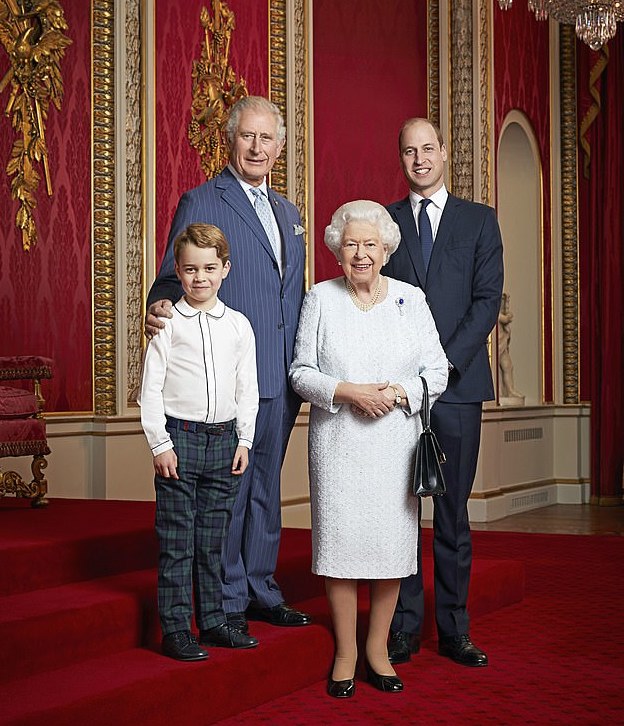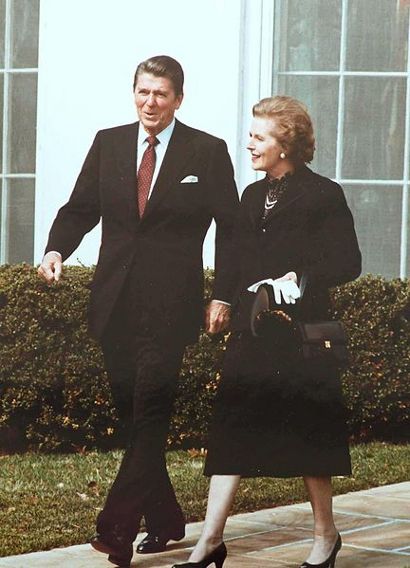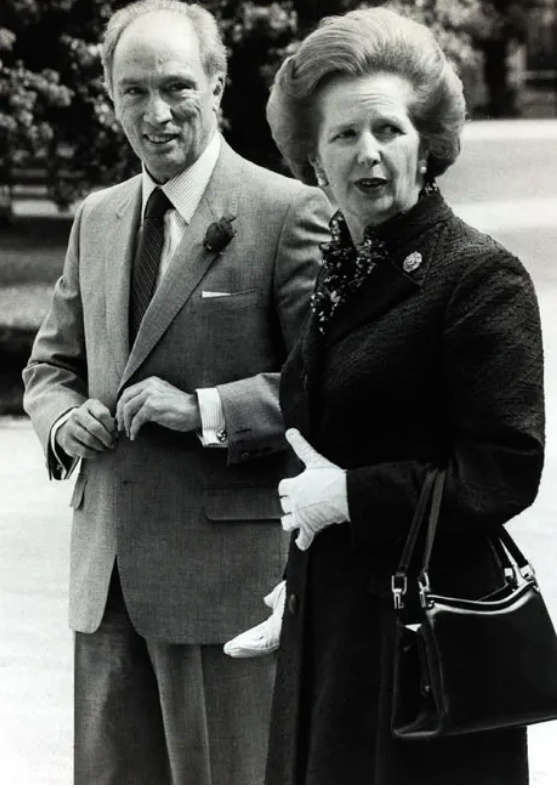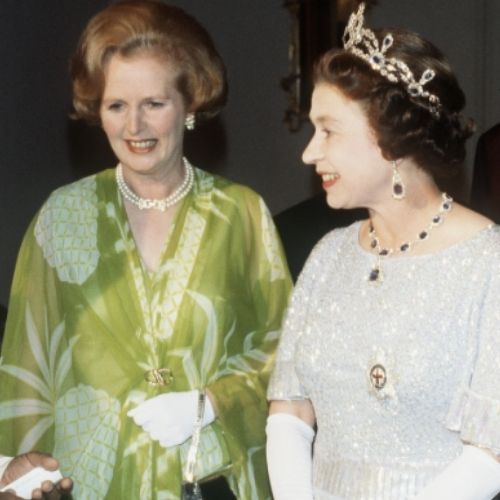‘The Crown’: The handbags and real relationship of Queen Elizabeth and Margaret Thatcher
Seven years after British Prime Minister Margaret Thatcher died, historians and media are still debating the true nature of her relationship with Queen Elizabeth II.
With The Crown season 4 now streaming, the question about whether the two women really liked (or disliked) each other has resurfaced.
As people at Buckingham Palace and Downing Street talked to the press during those years, presumably violating their NDAs, the reports were, and still are, conflicting.
One thing, however, is certain: Both women loved their handbags by Launer London, a British brand of luxury handbags and leather goods.

Queen Elizabth II reportedly owns 200 black Launer handbags. She’s said to carry her handbag everywhere she goes, even inside Buckingham Palace. The first royal to buy a handbag from Launer was Queen Elizabeth the Queen Mother in 1950, the reigning monarch’s mother and grandmother to Prince Charles.
In her younger years, Elizabeth was a style icon with her feminine print dresses and signature pearls. The queen cut quite a slim figure in gowns on official functions, feathered hats at parades or in breeches when riding her horses.
In her middle age and later years, the queen came to favor coat dresses and matching accessories—a black Launer handbag, brooches, gloves and a sensible pair of black shoes.

Thatcher also favored the Launer brand and often carried a large, black model that she slung on her arm. The first woman prime minister of Great Britain, she often wielded hers to intimidate or make a point.
When she died in 2013 the UK’s Evening Standard, one among many publications that wrote about Thatcher’s handbags, said it was her “secret weapon.”
I was always asked how it felt to be a woman prime minister. I would reply: I don't know, I've never experienced the alternative.
British designer Anya Hindmarch said the PM “used it metaphorically to ‘handbag’ her opponents.”(To handbag or to be “handbagged” became verbs for political assault in the Thatcher era.)
Days after Thatcher died of a stroke, The Telegraph reported that Launer London saw a 53 percent increase in sales of her favorite models, the Bellini and Adagio.
Thatcher’s power suits, coiffed hair, pussy-bow blouses, and solid, often black handbags showed how women can retain femininity as well as symbolize power.

In 2019, an Asprey handbag that belonged to her was auctioned by Christie’s as part of a lot that fetched $1.4 million.
It’s complicated: The relationship between the Queen and PM
The Crown season 4 covers 1979 to 1990, an exciting and tumultuous period for both the monarchy and British politics with the entrance of Lady Diana Spencer (Emma Corrin) and Thatcher (Gillian Anderson)—and their respective exits.
Anderson plays Thatcher so well. But though she gets the coiffure and accent down pat (better than Meryl Streep to some observers), she talks too slowly compared with the real PM. YouTube videos of Thatcher’s speeches and debates in parliament show her to be more animated.

The daughter of a grocer from Grantham, Thatcher studied chemistry before shifting to law at Oxford. She was a barrister and became a member of the parliament in 1959.
When she became prime minister in 1979, she was the eighth prime minister to serve during Queen Elizabeth II’s reign (Winston Chruchill was the first).
Nicknamed the “Iron Lady,” Thatcher was very popular at the beginning of her three terms. She helped institute economic reform, end the Cold World War with US President Ronald Reagan, and busted unions. But in the end, she was a polarizing figure, accused of destroying the fabric of British society.
Although the press could not resist the temptation to suggest disputes between the Palace and Downing Street, I always found the Queen’s attitude toward the work of government absolutely correct.
As every prime minister before her, Thatcher had a weekly audience with Queen Elizabeth.
At their first meeting, as depicted on The Crown, Thatcher curtsies so low she looks as though she’s genuflecting in front of the pope! It turns out Thatcher really did curtsy that way, prompting unflattering talk in the palace.
The book The Queen and Mrs. Thatcher: An Inconvenient Relationship by Dean Palmer summarizes their relationship in the description: “This is the remarkable story of how the two most powerful women in Britain met and disliked each other on sight. For over a decade they quietly waged a war against each other on both a personal and political stage, disagreeing on key issues including sanctions against South Africa, the Miner’s Strike and allowing US planes to bomb Libya using UK military bases.

“Elizabeth found the means to snub and undermine her Prime Minister through petty class put downs and a series of press leaks. Margaret attacked her monarch by side-lining her internationally, upstaging her at home and allowing the Murdoch press to crucify the Royal Family.
“The 80s (were) an era when Britain was changed beyond recognition by a woman who made ‘Thatcherism’ the defining word of the decade.”
Well, that seems definitive.
But, hang on. After Thatcher’s forced resignation in 1990, Queen Elizabeth bestowed on her the Order of Merit, Britain’s highest honor.
Membership to the order can only be granted by the queen and is limited to 24 people at any given time. Thatcher filled the vacancy left by the death of Lawrence Olivier in July 1989. That means the Queen had a full year to choose but didn’t deem anyone worthy.
She was given a peerage too, making her a “baroness.”

In her own memoir, The Downing Street Years, published in 1993 or three years after she left No. 10, Thatcher wrote about her Tuesday meetings with the Queen.
“All audiences with the Queen take place in strict confidence—a confidentiality that is vital to the working of both government and constitution.
“Perhaps it is permissible to make just two points about these meetings. Anyone who imagines that they are a mere formality or confined to social niceties is quite wrong; they are quite businesslike and Her Majesty brings to bear a formidable grasp of current issues and breadth of experience. And, although the press could not resist the temptation to suggest disputes between the Palace and Downing Street, I always found the Queen’s attitude toward the work of government absolutely correct.
“Of course, under the circumstances, stories of clashes between ‘two powerful women’ were just too good not to make up. In general, more nonsense was written about the so-called ‘feminine factor’ during my time in office than about almost anything else.
“I was always asked how it felt to be a woman prime minister. I would reply: ‘I don't know: I've never experienced the alternative.’”
Oh, the wit!

In the final episodes of The Crown season 4, we see an unusual break from protocol when Queen Elizabeth expresses a personal opinion on the prime minister—which the press actually reported on at the time. We also see Thatcher’s downfall in 1990 as partly due to her attitude towards the European community.
She opposed Britain’s entry into a single European currency and a greater central control in Europe. And she did tell the House of Commons, “No, no, no.”
We will never really know how often she said that to the queen too.
Banner images courtesy of Daily Mail, Hello, Launer.


